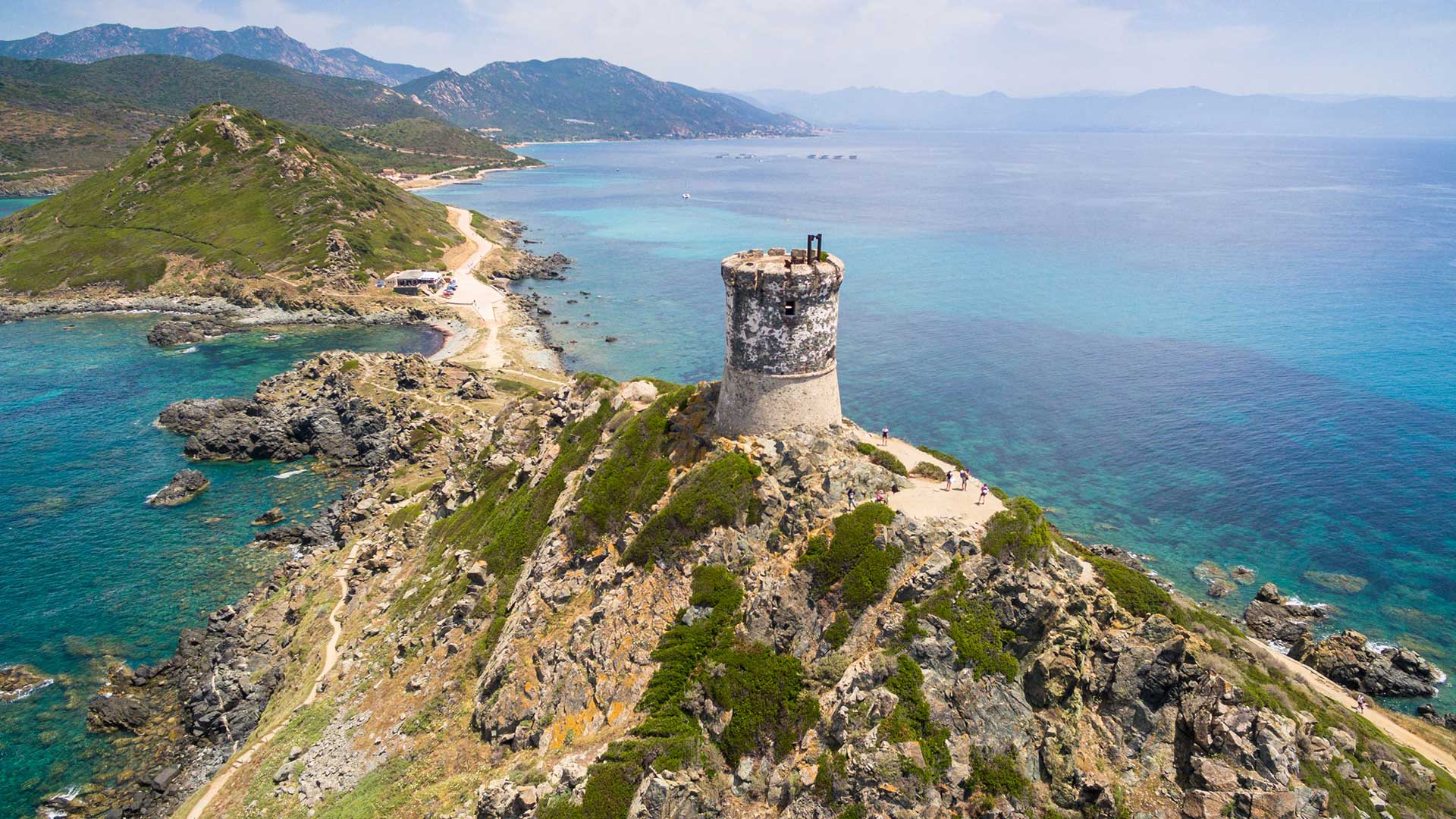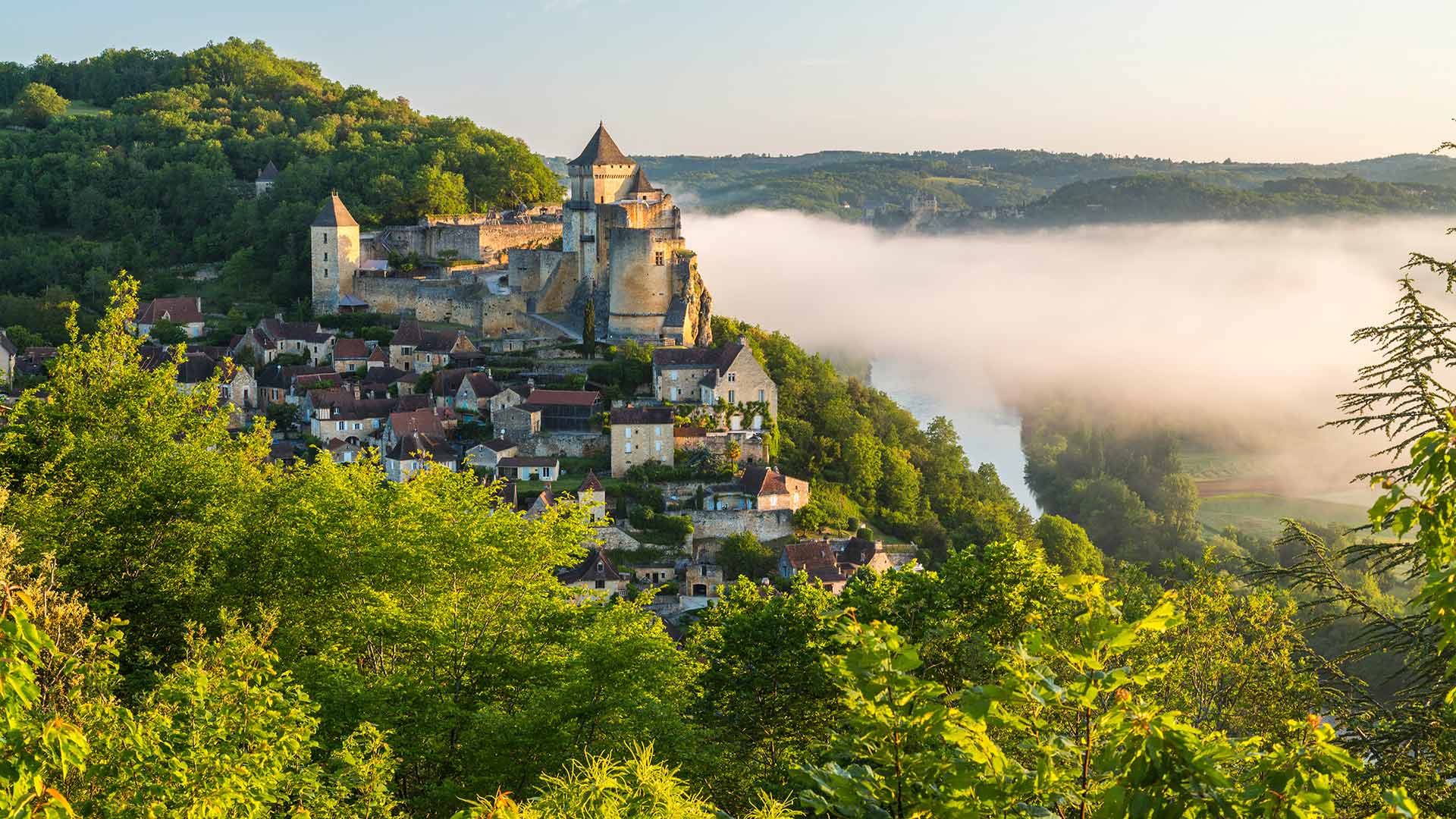标签 法国 下的文章
波尔多葡萄园,法国 Sunset landscape and smog in Bordeaux wineyard France (© agefotostock/Alamy)
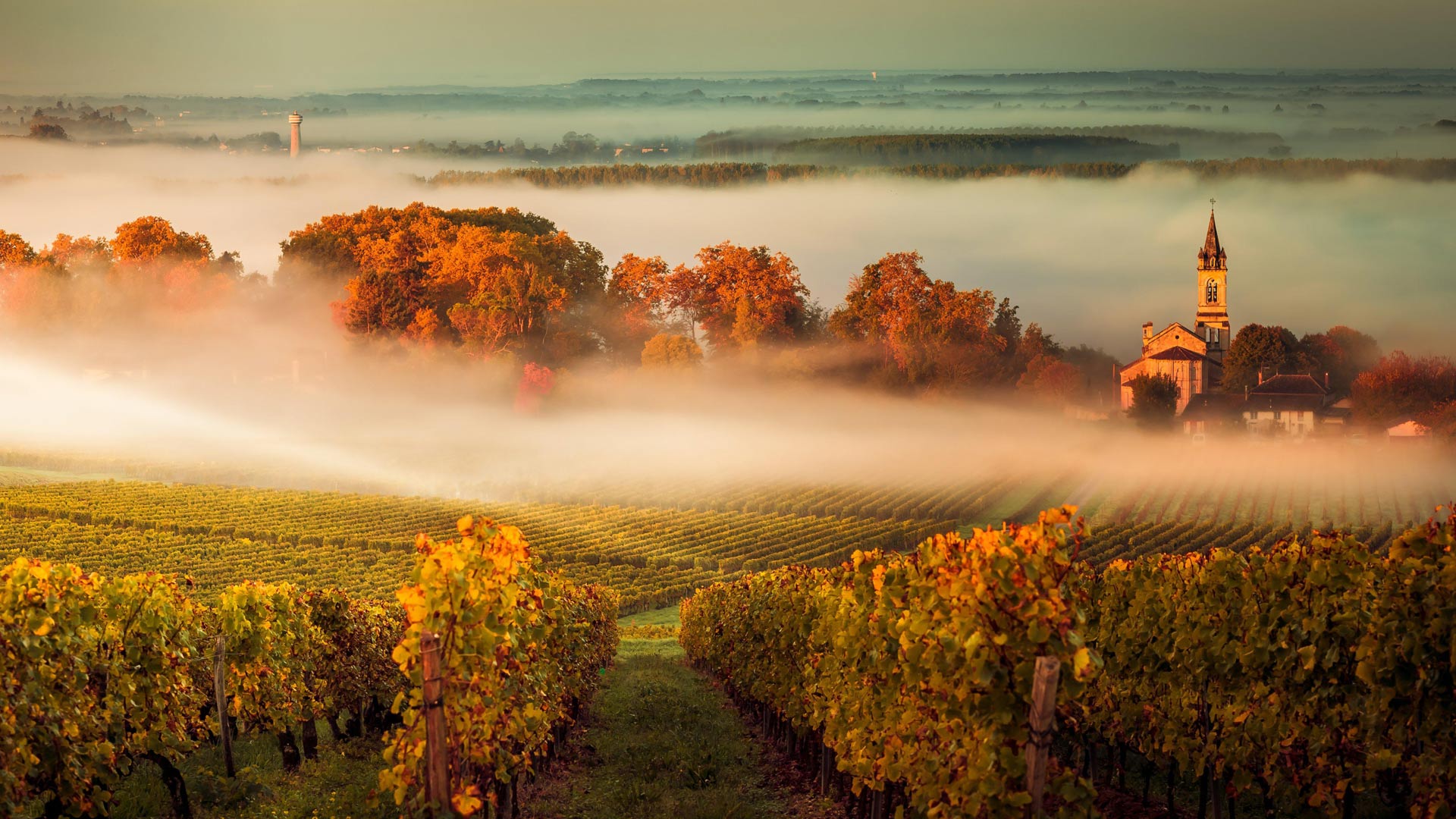
波尔多葡萄园,法国 Sunset landscape and smog in Bordeaux wineyard France (© agefotostock/Alamy)
A hedonist’s paradise
It's harvest season! For this occasion, we are taking you today to the Bordeaux vineyard, which many consider to be the oldest and most prestigious in the world. The influence of French wine culture in general and of the Bordeaux wine culture in particular, are largely due to the expertise of the wine-growers but also, to the rich history of the French territory, to which Bordeaux is no exception.
In Gironde, the department of Bordeaux, there are six large wine regions whose names may remind you of a few properly catered “aperitifs” or dinners. First of all, there are the Bordeaux Métropole wines, for instance those produced in the vineyards of Château Les Carmes Haut-Brion, the only vineyard with an address within the city limits. There are also the estates of Saint-Émilion, Pomerol, Fronsac, Médoc and Graves et Sauternes, then those of the Entre-Deux-Mers and Blayes and Bourg. So many names, so many flavors…
罗卡马杜尔,法国 Rocamadour, France (© Rrrainbow/Getty Images)
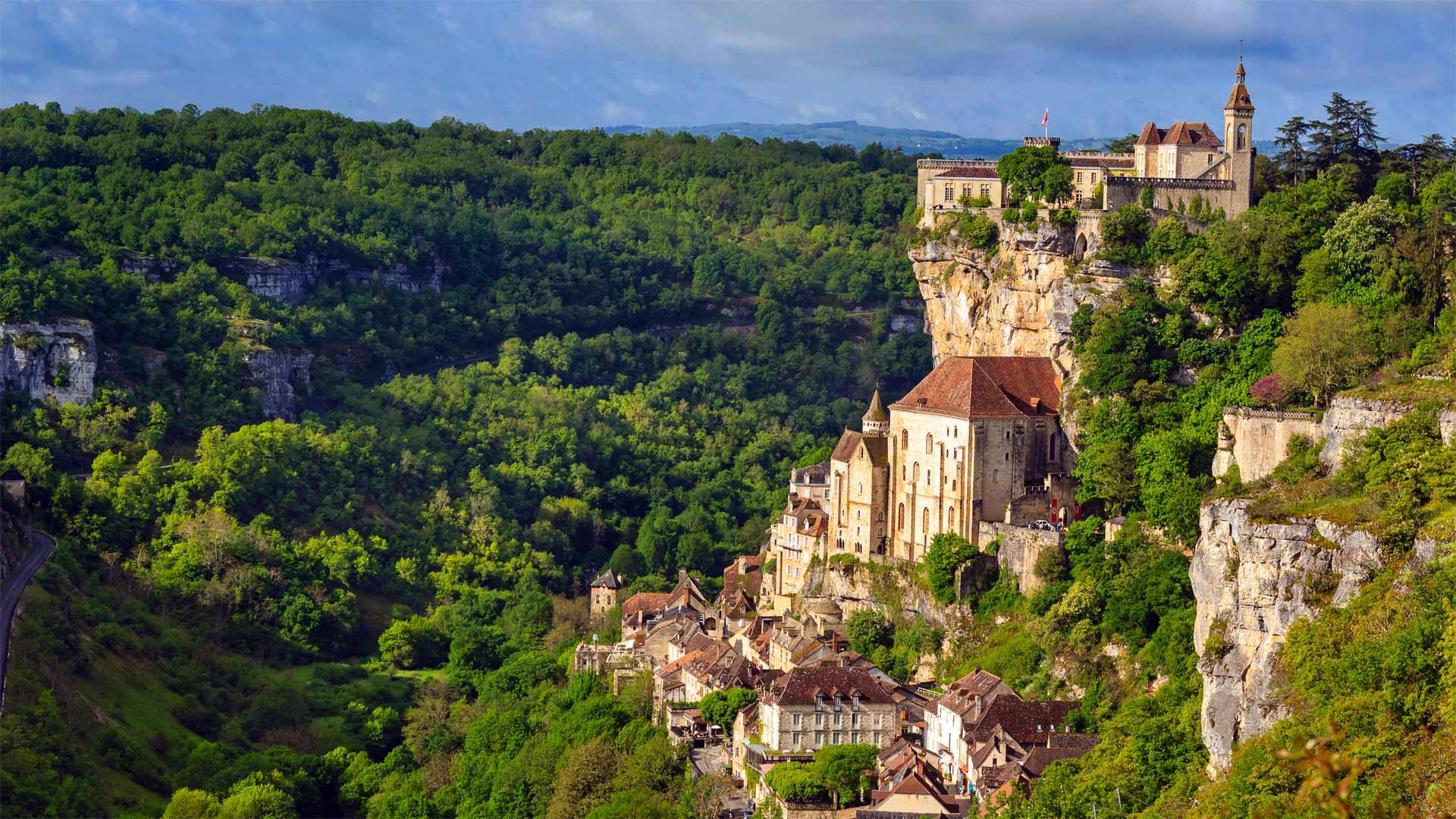
罗卡马杜尔,法国 Rocamadour, France (© Rrrainbow/Getty Images)
A city, a cliff, a canyon…and cheese
Gazing down the lush Alzou river valley at the vertically-oriented village of Rocamadour, you won't be surprised some regard the medieval French town as a holy site: Its beauty alone is mystical. The gorges of southwestern France are home to numerous striking historic hamlets built along and atop their steep edges. But Rocamadour is special as a stop for thousands of pilgrims on the Way of Saint James, a UNESCO-recognized traditional route through France and Spain that still draws journeyers both pious and secular. The town's cliff-top sanctuary and the black-painted Madonna statue within have been purported to have healing powers. If you're drawn to more earthly sources of good health, though, Rocamadour also lends its name to a delicious, locally crafted goat cheese.
As we end on that cheesy note, why not test your dairy IQ with today's quiz?
Bicycle sculptures at the Col d'Aubisque, Hautes Pyrenees, France (© Fco. Javier Sobrino/age fotostock)
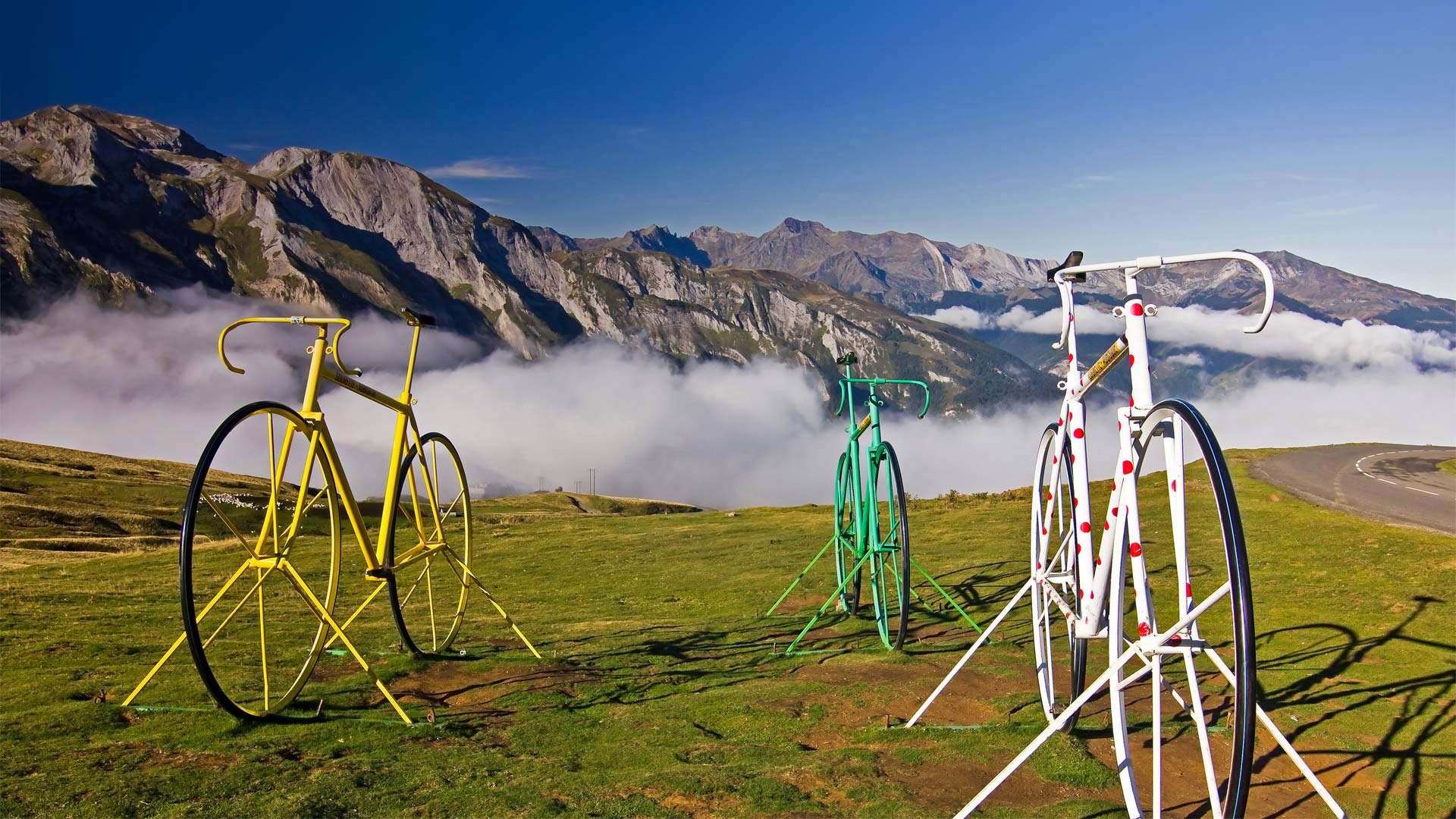
Bicycle sculptures at the Col d'Aubisque, Hautes Pyrenees, France (© Fco. Javier Sobrino/age fotostock)
Big wheels on a big mountain
Today we're high in the French Pyrenees at the Col D'Aubisque, a beautiful mountain pass topping out at 5,607 feet above sea level. It has special significance to riders and followers of the Tour de France, which starts today in Nice: The Col D'Aubisque is one of the most famous climbs on the 23-day Tour (21 days of racing), with riders clocking around 2,200 miles overall. The road up the pass has grades in either direction that can tilt past 10%. This epic mountain stage was first added to the 1910 race and it's since appeared in more than half the annual Tours, though not this year as it happens.
Just off to the side of the road at the pass, these three giant bicycle sculptures are painted in colors that correspond to the colorful jerseys worn by Tour de France riders. The yellow bike represents the overall time leader's yellow jersey; the green jersey is for the leader in stage points; and the white polka-dot jersey is for the best climber, or the 'King of the Mountains.' It's an apt name for anyone who conquers the Col D'Aubisque, which is an 'Hors Categorie' climb, meaning it is beyond categorization. In other words, it's really, really, hard. While climbing the Col in 1910, French rider Octave Lapize famously yelled at Tour officials, “You are murderers!” Today, motorists can drive over the pass without breaking a sweat, but cyclists still have their work cut out for them.
鸟瞰桑吉奈尔群岛,法国科西嘉 (© sam74100/Getty Images Plus)
伊夫城堡,法国马赛 Château d'If in Marseille, France (© Boris Stroujko/Shutterstock)
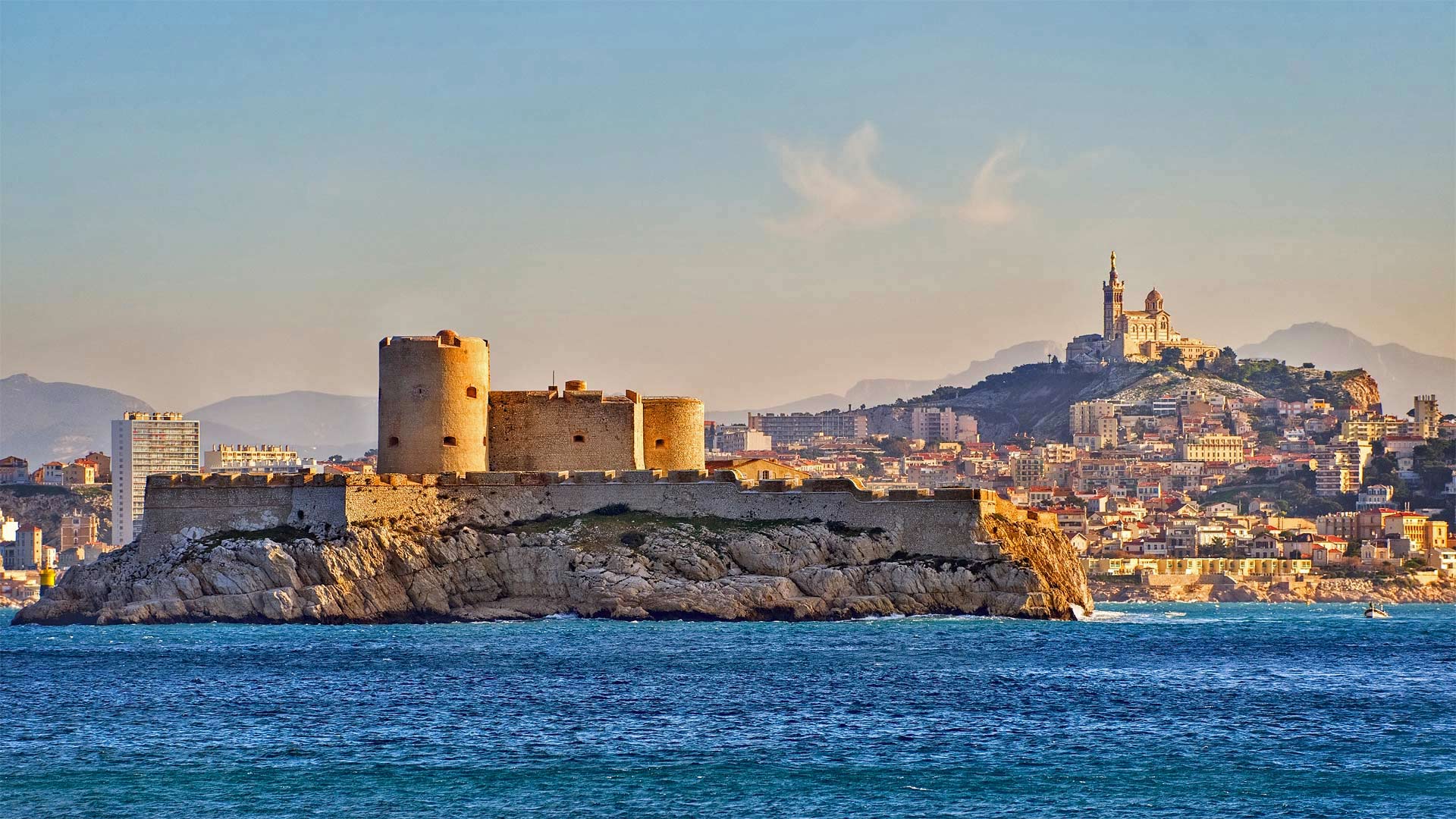
伊夫城堡,法国马赛 Château d'If in Marseille, France (© Boris Stroujko/Shutterstock)
A prison fit for a count
Château d'If, off the coast of Marseille, France, was built beginning in 1524 as a fortress by King Francis I because of the tiny island's steep cliffs and strategic location. While the 'château' never gained notoriety defending the ancient port (since it was never attacked), it did become famous as a prison. Surrounded by treacherous currents—like Alcatraz in San Francisco—it gained a reputation starting in the late 16th century as a dumping ground for powerful political and religious prisoners. As far as official records go, none of the prisoners condemned there ever escaped.
However, there is one famous tale of an escape from the château by one Edmond Dantes, the titular hero of the 1844 Alexander Dumas novel 'The Count of Monte Cristo.' And though he is a work of fiction, you can visit Edmond Dantes' cell on the lower level of the prison. The nearly perfectly preserved castle is just a short ferry ride from the docks of the old port of Marseille.
巴黎的先贤祠,法国 The Panthéon in Paris, France (© manjik/Shutterstock)

巴黎的先贤祠,法国 The Panthéon in Paris, France (© manjik/Shutterstock)
Under Paris skies
For Bastille Day, aka French National Day, we examine not the titular prison that was the site of beginning of the French Revolution, but another building inexorably wrapped up in that powder-keg moment of French history. That dome in the upper right portion of this photo is the Panthéon. Construction of the building—intended to be a church—began in 1758. But by the time it was completed, the French Revolution was in full swing and the new establishment decided that it should instead be used as a mausoleum for distinguished French citizens, which it remains today.
雾中的卡斯特诺城堡,法国佩里戈尔 (© Infografick/iStock/Getty Images Plus)
杜尔比河峡谷中的Moulin de Corp和小桥,法国Grands Causses自然公园 The Dourbie Gorge Corps Mill and adjoining bridge in Grands Causses Natural Regional Park, France (© Hemis/Alamy)
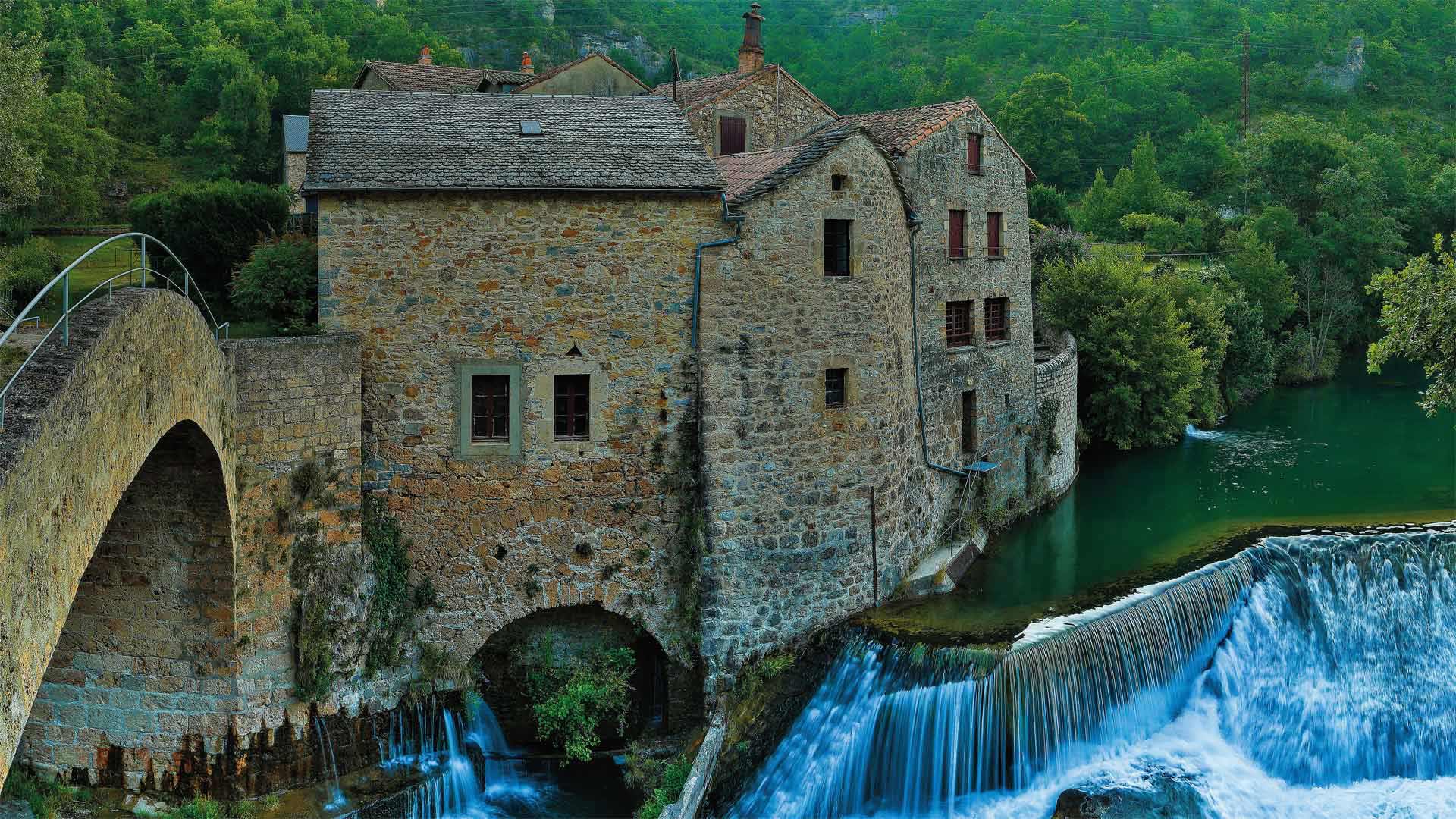
杜尔比河峡谷中的Moulin de Corp和小桥,法国Grands Causses自然公园 The Dourbie Gorge Corps Mill and adjoining bridge in Grands Causses Natural Regional Park, France (© Hemis/Alamy)
A gorge-ous mill in the Causses
It may look peaceful now, but on warm days the river below this mill attracts swimmers, kayakers, and the occasional sport fisherman. Moulin de Corps (Corps Mill) connects to a stone bridge that spans the Dourbie River in a gorge deep within the Grands Causses Regional Nature Park of southern France. Built by a French lord in the 14th century, the mill originally produced flour. But by the 20th century it had been converted to the private residence we see in today's picture. The Grands Causses Regional Nature Park is home to hundreds of mills like this one, examples of a cultural heritage that can still be found throughout the Mediterranean agro-pastoral landscape.
薰衣草田和蜂箱旁的向日葵地,法国普罗旺斯 Fields of lavender and sunflowers with beehives in Provence, France (© leoks/Shutterstock)
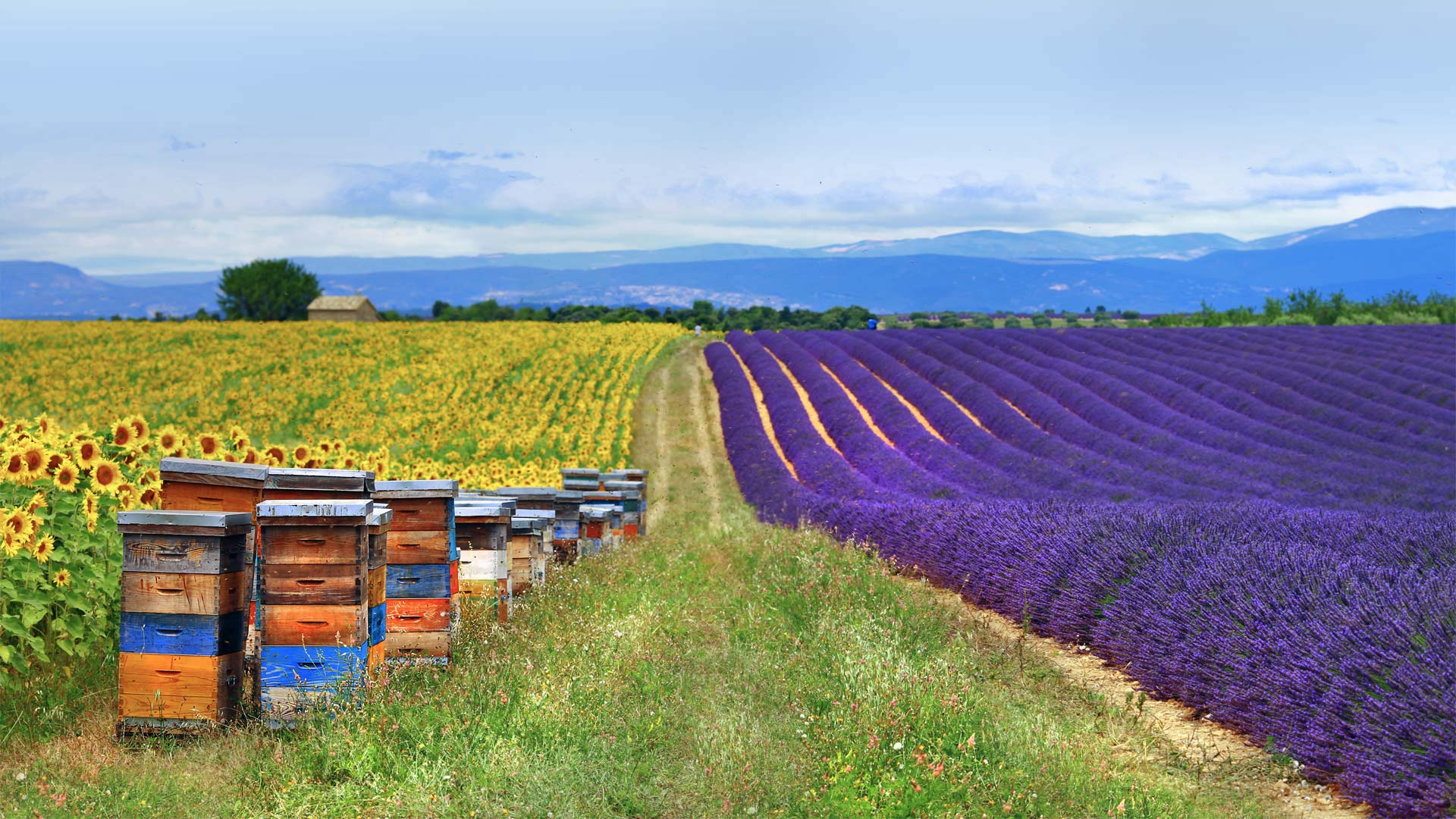
薰衣草田和蜂箱旁的向日葵地,法国普罗旺斯 Fields of lavender and sunflowers with beehives in Provence, France (© leoks/Shutterstock)
It's World Bee Day
Today we've buzzed to Provence, France, to enjoy this scenic view brought to you by bees. These hard-working insects are key pollinators of flowers, like the nectar-rich lavender seen growing here. Bees are also critical for the pollination of fruits and vegetables—about a third of the food we eat is a result of honeybee pollination. In the US, honeybees, whether tended by beekeepers or living in the wild, pollinate about $20 billion worth of crops every year. That's a lot of gold—and doesn't even include their delicious honey. So today, on World Bee Day, we invite you to stop and smell the flowers and give a nod to the bees that help color our world.
南奥索峰的Lac d'Ayous小屋,法国 Lac d'Ayous hut with Midi d'Ossau mountain, France (© Eneko Aldaz/Offset by Shutterstock)
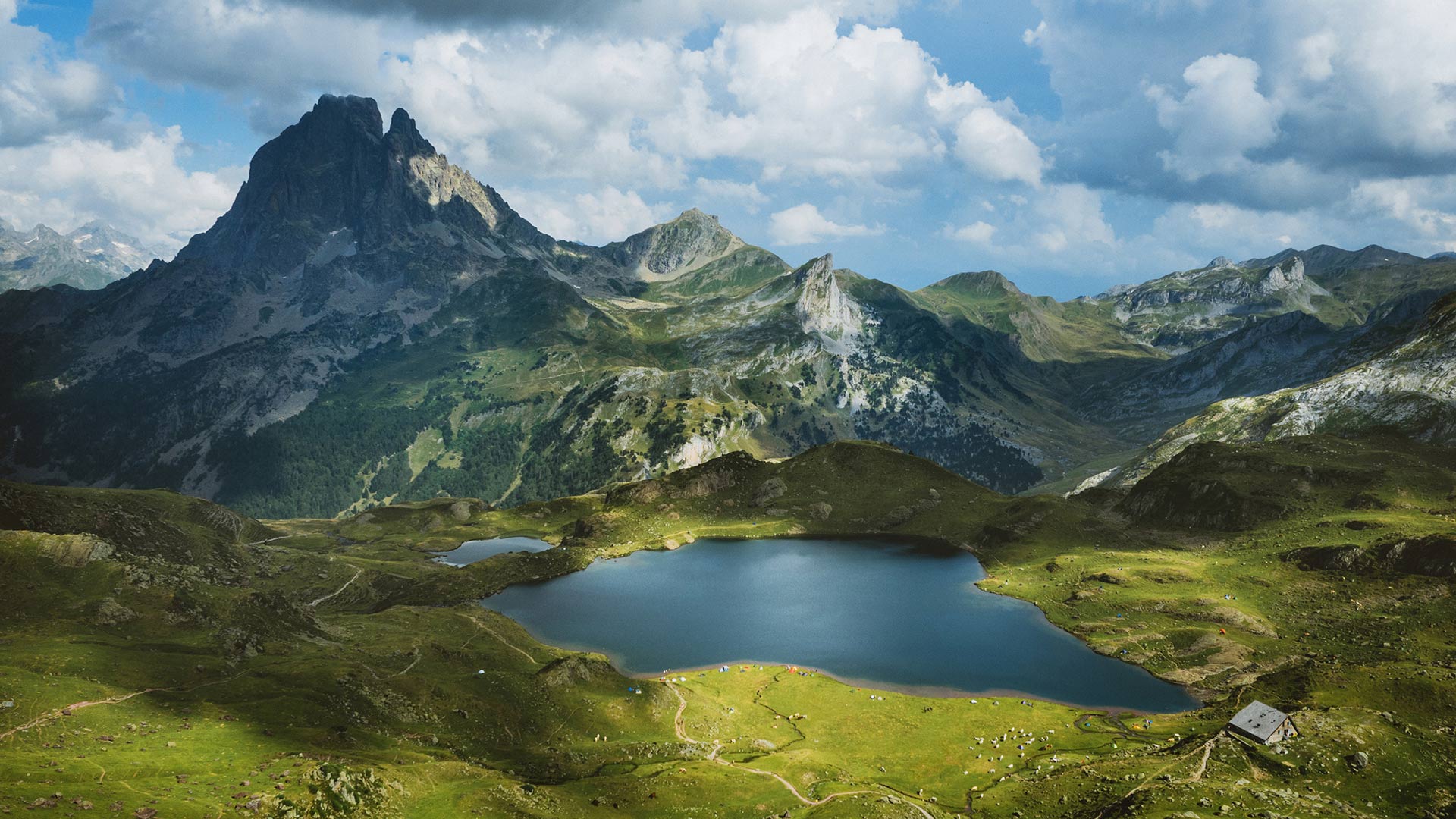
南奥索峰的Lac d'Ayous小屋,法国 Lac d'Ayous hut with Midi d'Ossau mountain, France (© Eneko Aldaz/Offset by Shutterstock)
Beautiful lake in the Pyrenees mountains
The Ayous lakes are a marvel here. Nestled in the heart of the Pyrenees, this set of six lakes provide an unparalleled environment for hiking enthusiasts and nature lovers. In this uncertain times, hiking is not necessarily a top priority, but hope is allowed, nothing prevents us from dreaming of what we will do next. In today's image, we can see the southern peak of Ossau, whose highest point is 2884 meters above sea level, and Lake Ayous, also called Lake Roumassot. Lake Ayous covers an area of 5.1 hectares and can reach a depth of 16 meters in some places.
